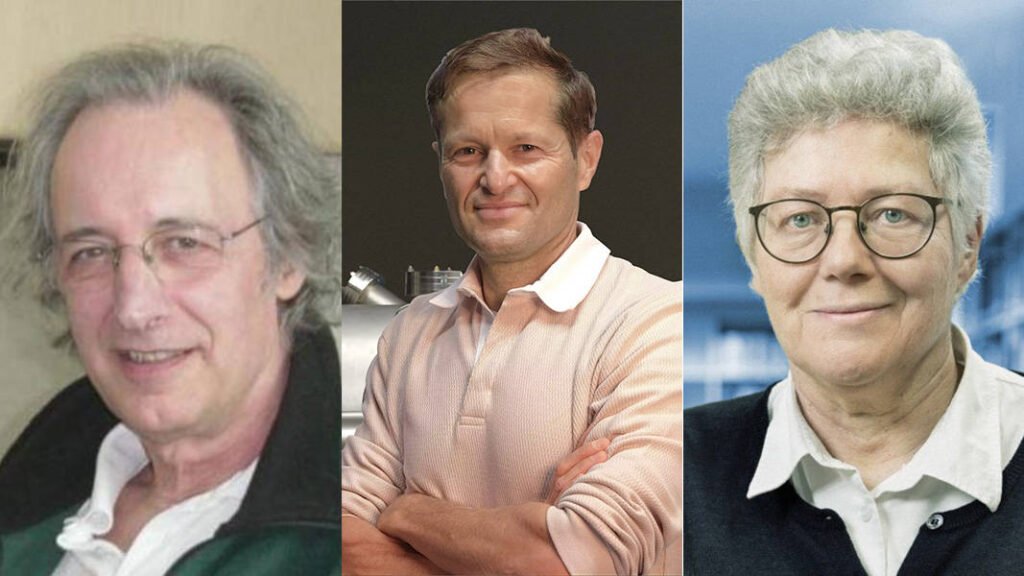The Nobel Prize in Physics 2023 Awarded to Pierre Agostini, Ferenc Krausz, and Anne L’Huillier
The Nobel Prize in Physics, one of the most prestigious honors in the field of science, has been awarded to three remarkable individuals in 2023. Pierre Agostini, Ferenc Krausz, and Anne L’Huillier have been recognized for their groundbreaking contributions to the realm of laser physics and attosecond science. This award not only acknowledges their individual brilliance but also highlights the significance of their collaborative efforts in pushing the boundaries of our understanding of light and matter interactions.

Why this News is Important
Advancements in Laser Physics: The Nobel Prize in Physics for 2023 underscores the crucial role played by advancements in laser physics. It signifies the growing importance of laser technology in various fields, including medicine, materials science, and telecommunications.
Pushing Scientific Boundaries: The work of Agostini, Krausz, and L’Huillier has pushed the boundaries of what we thought was possible in the study of ultrafast phenomena. Their contributions have opened up new avenues for exploring the behavior of matter at timescales previously unimaginable.
Global Recognition: Winning the Nobel Prize is a testament to the global recognition of the excellence in scientific research. It serves as an inspiration to aspiring scientists worldwide, emphasizing the importance of interdisciplinary collaboration in tackling complex scientific questions.
Historical Context
To understand the significance of this Nobel Prize, we must delve into the historical context. Laser technology, which stands at the heart of this award, has a rich history. The concept of a laser (Light Amplification by Stimulated Emission of Radiation) was first proposed by Arthur Schawlow and Charles Townes in the 1950s. Their pioneering work laid the foundation for the development of lasers.
Over the decades, lasers have become indispensable tools in various fields, from manufacturing to medical procedures. However, the work of Agostini, Krausz, and L’Huillier represents a leap forward by enabling researchers to study processes at the attosecond level (one billionth of a billionth of a second). This level of precision was once thought to be unattainable.
Key Takeaways from “The Nobel Prize in Physics 2023”
| Serial Number | Key Takeaway |
|---|---|
| 1 | Pierre Agostini, Ferenc Krausz, and Anne L’Huillier have won the Nobel Prize in Physics 2023 for their groundbreaking work in laser physics and attosecond science. |
| 2 | This award highlights the significance of laser technology in various scientific and technological advancements. |
| 3 | The laureates’ research has enabled the study of ultrafast phenomena, allowing scientists to explore the behavior of matter at incredibly short timescales. |
| 4 | The Nobel Prize serves as an inspiration to scientists worldwide and underscores the importance of interdisciplinary collaboration in scientific breakthroughs. |
| 5 | Laser technology, with its rich historical context, continues to evolve and play a vital role in shaping the future of science and technology. |
Important FAQs for Students from this News
Q: What is the Nobel Prize in Physics 2023 awarded for?
A: The Nobel Prize in Physics 2023 is awarded for significant contributions to laser physics and attosecond science.
Q: Who are the recipients of the Nobel Prize in Physics 2023?
A: The Nobel Prize in Physics 2023 was awarded to Pierre Agostini, Ferenc Krausz, and Anne L’Huillier.
Q: Why is laser technology important in scientific research?
A: Laser technology is crucial in scientific research as it enables precise measurements and studies of ultrafast phenomena, which was previously unattainable.
Q: How has the Nobel Prize impacted the field of science?
A: The Nobel Prize serves as a global recognition of excellence in scientific research, inspiring scientists worldwide and emphasizing the importance of collaboration.
Q: What is the significance of studying matter at attosecond timescales?
A: Studying matter at attosecond timescales allows scientists to explore and understand extremely fast processes, contributing to advancements in various scientific fields.
Some Important Current Affairs Links

















 Exciting News!
Exciting News!  Join Our Telegram Channel Now!
Join Our Telegram Channel Now!
 Join our Telegram channel for a thrilling adventure into the world of daily current affairs.
Join our Telegram channel for a thrilling adventure into the world of daily current affairs. 
 Don’t miss out on the latest updates and insights! Click to join now and be part of the knowledge revolution!
Don’t miss out on the latest updates and insights! Click to join now and be part of the knowledge revolution! 
